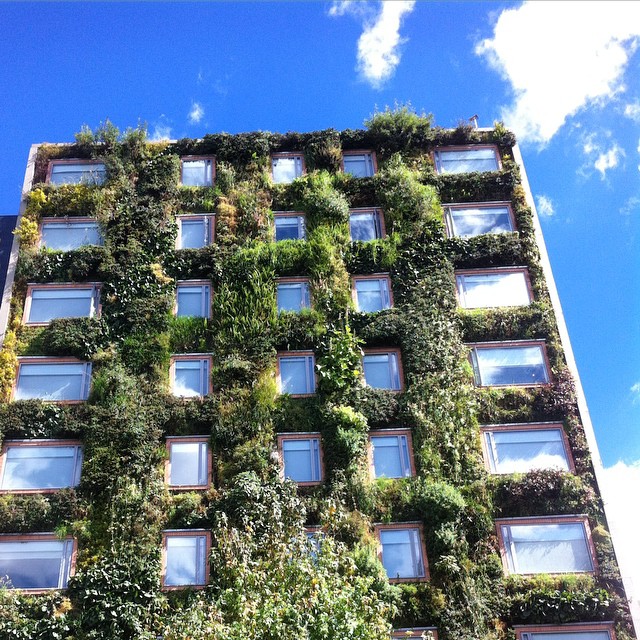-Analysis-
BOGOTÁ — Cities of the future may turn out to be friendlier, cleaner places than the desolate dumps science fiction films have been depicting in anticipation. A range of initiatives being taken around the world — some apparently of little importance, others bigger in scope — are already steering the urban future away from worst-case scenarios. Your children and grandchildren may end up avoiding the world of Mad Max or Blade Runner.
Certainly, cities are grappling with air pollution, massive trash generation and heaving population numbers. But many are also working on becoming more sustainable.
Susana Vélez-Haller, a forestry expert with the World Wildlife Fund, says cities are a paradox right now, requiring so many resources yet producing so little. Cities, she says, generate little other than "a lot of waste. The idea is to change that."
As centers of economic activity, cities are a magnet for people. Since 2008, the majority of the world's population lives in cities, and as a recent UN Habitat report indicates, this majority will become a third of all people by 2050.
That makes cities key to mitigating climate change and contributing to public health, food security and global welfare. "When we speak of sustainability," Vélez says, "one thinks of territorial planning, development, economy, efficient energy use, waste," and anything else that can be managed well enough to avoid the Mad Max scenario.
So what can we do today to make cities amenable? One solution is green architecture and buildings that take their environment into account. Respecting the environment is "understanding that you are building in an existing ecosystem, which has its own conditions," says David Perico, head of Arquitectura Más Verde, a construction and landscape architecture firm. "That means exploiting the natural elements nearby, like favoring penetration of natural light depending on where the windows are, looking at wind to produce energy, and considering which building fronts can be used to gain or lose heat, depending on the climate."
A big winner in recent years has been the vertical garden. They provide thermal isolation on building sides and reduce the intensity of city "heat islands." A temperature difference between city centers and their peripheries is normal, says Perico. "While the city center is lukewarm at night and the periphery cold, this changes in the day," he says. "So these green walls can't just be thought of as another domestic technology but as a holistic, collaborative and social tool for the city."
Green walls return to nature a bit of the space taken from it by the city, provide a stop-off point or temporary shelter for migrating birds, capture pollutants and contribute to the welfare of residents on many levels.
No more floods?
Flooding and reuse of water are other issues modern and future cities must manage correctly. Runoff rainwater flowing into the drains from roofs or tarmac usually isn't treated, though it contains particles and synthetic material. "This is not just a flooding risk," says Juan Pablo Rodríguez, a civil engineering lecturer at Andes University in Bogotá. "It also has a major and negative environmental impact on rivers."
A response to this is for cities to have more filtering spaces such as soil and greenery, where water can gradually seep into the dirt. Soil and vegetation reduce flooding risks and act as filters for the water. Rodríguez says a study by his university has shown that runoff water from rooftop greenery is pH neutral, while green roofs also retain most rainwater through dry periods, and about 10% to 30% in winter.
Use of runoff water is elementary in Colombia, he says, but in places like the United Kingdom and Australia, systems have been devised to guide runoff toward areas of trees, where it is effectively stored. He observes that low-lying areas in urban parks can function as stores for use when water is more scarce, and suggests homes start using tanks to store the rainwater that pours onto their roofs.
Biodiversity returns to Colombian cities
The country's enormous range of fauna and flora is beginning to be explored for urban sustainability. "Colombia has been considering biodiversity strategies for 20 years now, though above all in rural areas and national parks," says María Angélica Mejía, a researcher at Humboldt Institute. Biodiversity provides such "services" as assuring the presence of pollinating agents in the garden or even aiding food security through city farming. This cannot be an obstacle in Colombia, she says, where so many country people have had to move into cities and have "harvesting in their genes."
Green spaces of any kind — be they forest segments or artificially created — are a crucial component of sustainable cities, she points out. "We have to have a green area within a five-minute walk," says Mejía, and any type of parkland can "supplement eco-systemic needs and contribute to our welfare."







